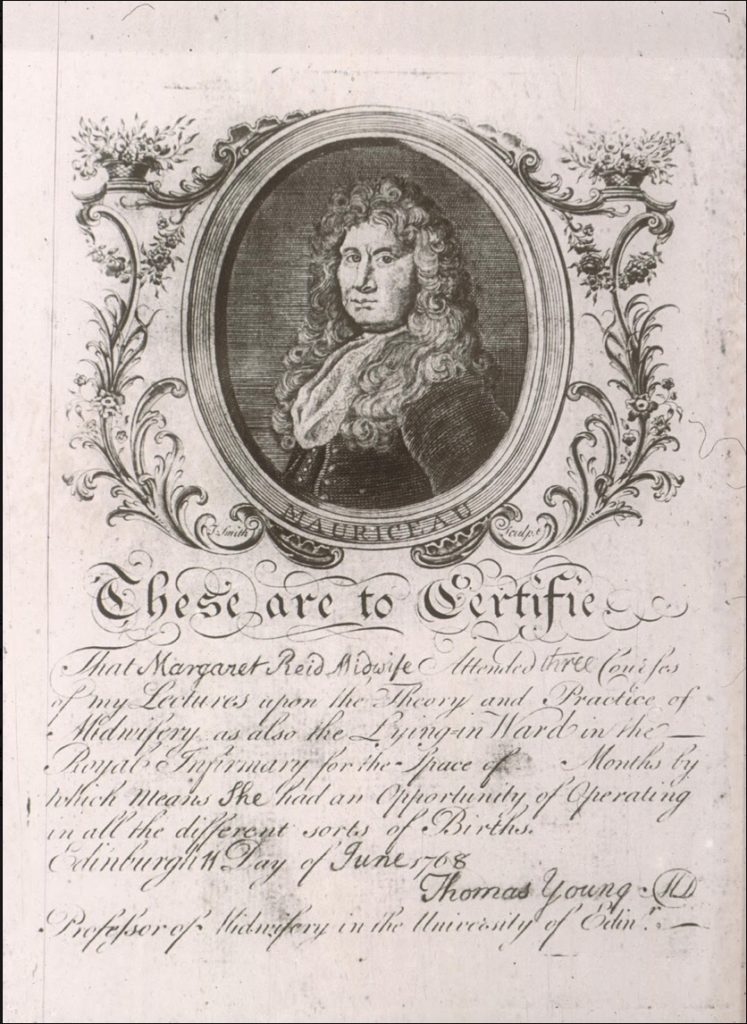THE ROYAL INFIRMARY OF EDINBURGH
SIGNED BY THOMAS YOUNG, M.D.

This is an exceedingly rare item – a certificate made out to Margaret Reid, from the Royal Infirmary of Edinburgh (Scotland) for completion of a course midwifery dated June, 1768. It is signed by Thomas Young, M.D., the eminent Professor of Midwifery at the University of Edinburgh from 1756 – 1783.
MEDICAL MIDWIFERY
The practice of medical ( as opposed to community) midwifery in Edinburgh dates back to 1726, when Joseph Gibson was appointed Professor of Midwifery by the town council. His goal was to train and license the town’s midwives, rather than teach medical students (mandatory teaching of midwifery to medical students did not occur until 1833). This was the beginning of initiatives in Scotland intended to improve the quality of midwifery in order to decrease the number of deaths in childbirth and increase the population. After Gibson’s death, Robert Smith was appointed a Professor of Midwifery in the City’s College, but the first holder of the chair to actually lecture on Midwifery to students was the signer of this certificate, Thomas Young, M.D.
THOMAS YOUNG
1726 – 1783
Young believed that practical clinical instruction was crucial for a full understanding of midwifery. He was responsible for making the earliest provision for the institution of midwifery in 1756: four maternity beds in the Royal Infirmary. By 1781 he tried to rally support for the building of a general Lying-in Hospital in the city that would allow his students close-up experience. Young died before his dream could be realized and it was his successor, Dr. Alexander Hamilton, who finally succeeded – The General Lying-In Hospital was built in 1793, and renamed the Edinburgh Royal Maternity Hospital in 1846. It was not until 86 years later, in 1879, when the first purpose-built maternity hospital was finally opened. It was named the Edinburgh Royal Maternity and Simpson Memorial Hospital in honor of one of Edinburgh’s most famous physicians, James Young Simpson. Simpson had succeeded to the chair in 1840 after Hamilton’s death, and contributed much to midwifery. In 1847, he famously conducted private experiments in which he discovered the anesthetic properties of chloroform, which led to its use to relieve pain during labor.
This was obtained from a person in Scotland whose grandmother served as a lifelong secretary to the chair of Midwifery at the Royal Infirmary. In 1946, the name of the position was changed to the Chair of Obstetrics and Gynecology. There is a penciled notation on the back stating it was used in the office of Robert W.J. Kellar, M.D., who held the Chair from 1946 to 1974. Presumably, it was gifted to the secretary after he left the office.
